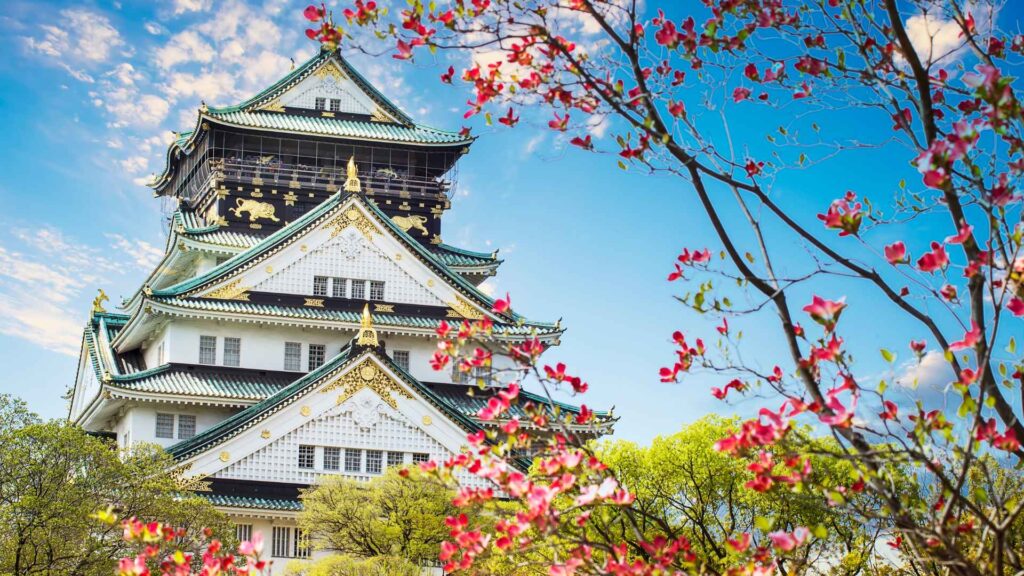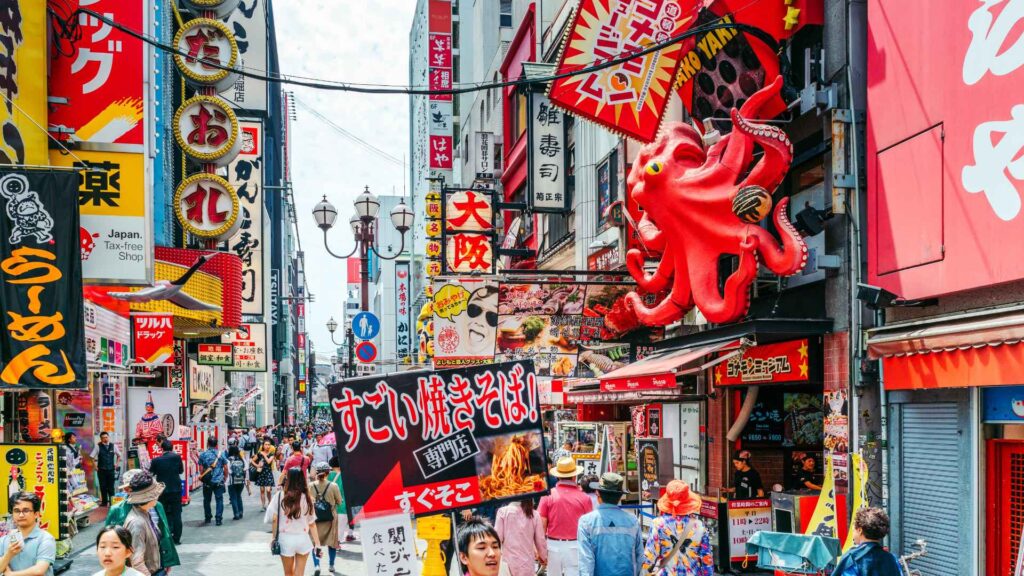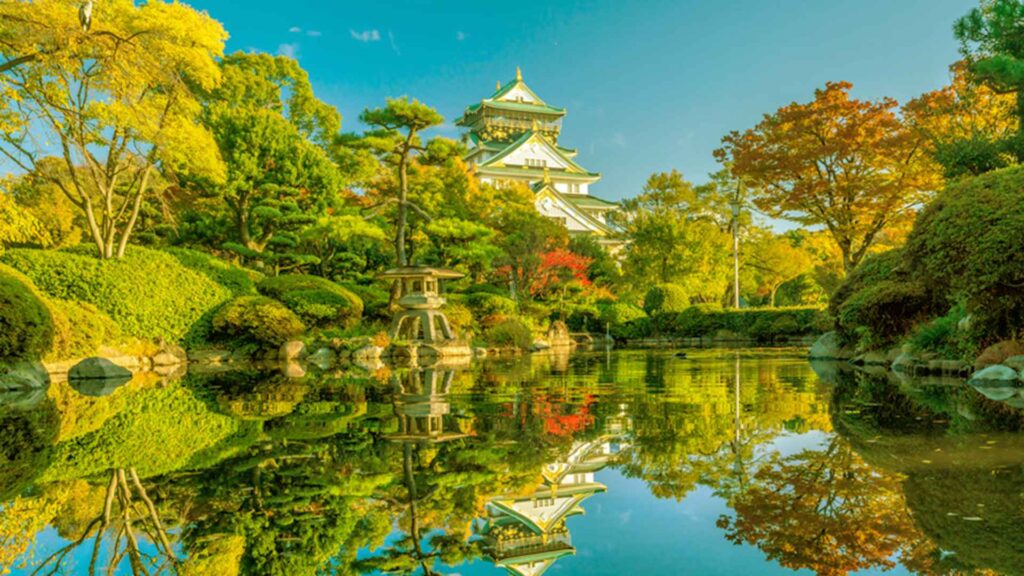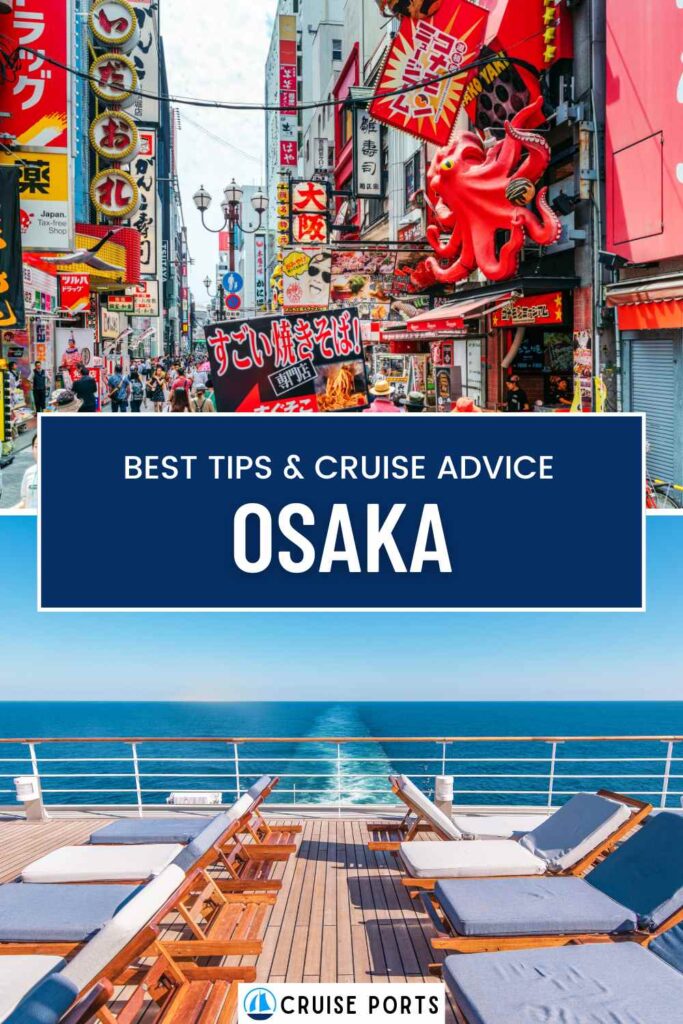Welcome to the heart of Japan’s vibrant Kansai region—Osaka.
This bustling port city blends ancient temples with modern skyscrapers, making it an exciting gateway for cruise travelers.
Whether you’re visiting for a day or embarking on a grand tour, this guide will ensure a smooth, memorable journey through Osaka’s cruise port.
Overview of Osaka Cruise Port
Osaka Cruise Port stands as a significant gateway to Japan’s cultural, historical, and modern wonders.
Strategically located in the Kansai region, this busy port is a favorite stop for cruise ships carrying travelers eager to explore Osaka’s legendary food scene, thriving shopping districts, and iconic landmarks.
Thanks to its proximity to downtown, Osaka Cruise Port offers convenient access to must-see sites like Osaka Castle, Dotonbori, and the futuristic Umeda Sky Building.

The port’s layout is structured to make arrivals and departures hassle-free. A spacious cruise terminal greets visitors, providing efficient check-in counters, ample seating, and multilingual signage.
Moreover, several currency exchange facilities and ATMs are available, ensuring guests can easily obtain Japanese yen upon arrival. For added convenience, the terminal often has Wi-Fi zones so travelers can stay connected and plan on the go.
Seasonal nuances also shape the experience at Osaka Cruise Port. Spring offers vibrant cherry blossoms, while autumn dazzles with fiery foliage in nearby parks and historic sites.
During winter, travelers can explore festive illuminations and hot-spring trips, while summer brings festivals and lively entertainment throughout the city.
Whichever season you choose, the port’s well-maintained infrastructure and surrounding amenities ensure an enjoyable start or finale to any Japanese adventure.
With its friendly staff and smooth operations, Osaka Cruise Port caters to the diverse needs of international passengers. You’ll find helpful services, from guided assistance for travelers with mobility concerns to dedicated immigration counters for expedited processing.
Whether you’re a seasoned cruiser or experiencing Japan’s wonders for the first time, the port delivers a welcoming, efficient introduction to Osaka’s unique culture and hospitality.
Getting to Osaka Cruise Port
Osaka Cruise Port’s central location makes it easy for visitors to arrive swiftly, whether you’re flying into Kansai International Airport (KIX), coming from other parts of Japan, or transferring from nearby cities. Several transportation options cater to varying budgets and preferences:
- Train and Subway: The city’s extensive rail network is fast, reliable, and relatively affordable. If you’re arriving by plane, catch the Nankai Airport Express or the JR Kansai Airport Rapid Service to central Osaka. From there, consider the subway lines (like the Chuo Line) or private railway companies to get closer to the cruise terminal. Rail passes, such as the JR Pass or Kansai Thru Pass, can potentially save you money if you plan to travel around the region extensively.
- Limousine Bus or Airport Shuttle: Direct airport limousine buses link Kansai International Airport and Itami Airport to central Osaka hotels and major terminals. Though these bus rides can be slightly more expensive than trains, they offer hassle-free, comfortable transfers—especially beneficial if you have large luggage. Additionally, some cruises provide dedicated shuttle services to and from airports, which you can book in advance.
- Taxi or Rideshare: Taxis in Osaka are safe, clean, and metered. While they can be pricier than public transport, they’re a convenient door-to-door option. If you prefer using apps, Uber and local ridesharing services like JapanTaxi might be available, although coverage can be limited around the cruise port.
- Car Rentals: If you’re comfortable driving on the left side of the road and have an International Driving Permit, renting a car can be a flexible choice. Many major rental agencies operate near airports and city centers. Keep in mind that tolls, parking fees, and city traffic can add up, so evaluate whether the convenience justifies the cost.
To keep your journey efficient, plan your route in advance and take note of your terminal’s specific location.
Some cruise liners dock at Osaka Port International Ferry Terminal, while others may use different piers.

Navigating the Terminal
Once you step into the Osaka Cruise Port terminal, you’ll appreciate the clean, well-organized layout designed to guide travelers effortlessly.
Multilingual signs—usually in Japanese, English, Chinese, and Korean—direct you from check-in counters to immigration checkpoints, lounges, and baggage areas.
To streamline your departure, arrive at the terminal with all necessary travel documents on hand:
- Passport with any required visas
- Cruise boarding pass or e-ticket
- Travel insurance details (if applicable)
Check-in Procedures:
- Proceed to your cruise line’s designated counter. Friendly staff will verify your documents and hand you boarding credentials.
- Hand over any large baggage if you prefer it delivered directly to your cabin. Ensure you label bags properly to prevent mix-ups.
- Receive embarkation instructions, including safety procedures and muster drill times.
Once you’ve checked in, explore the terminal’s passenger lounges and seating areas while waiting to board. Most lounges provide free Wi-Fi so you can stay connected or check last-minute details about port excursions. Nearby vending machines and small shops offer snacks, drinks, and any last-minute essentials like portable chargers or toiletries.
If you’re looking to exchange currency, foreign exchange counters are usually open during cruise ship calls.
You might also find ATMs that accept major international cards such as Visa, MasterCard, and UnionPay. To avoid queues, consider exchanging some money in advance, or plan to arrive early to take advantage of quieter times.
Immigration and Security:
- Non-Japanese passport holders typically proceed through separate lines, ensuring a smooth flow.
- Present your passport and completed arrival/departure cards if required.
- Standard security screenings apply, similar to airports. Remove metallic objects and follow instructions from security personnel.
After clearing formalities, keep your boarding documents accessible. Many travelers find it helpful to carry a small folder or pouch to store passports, cruise tickets, and health documents in one place. This method keeps you organized and reduces any last-minute scrambles.
By the time you’re through check-in, you’ll be eager to board and begin exploring your ship. In most cases, staff announce boarding by groups, so watch for clear signage or listen for official announcements in the lounge.
Thanks to the terminal’s efficient layout, you’ll find yourself on deck and admiring Osaka’s skyline before you know it.
Exploring Nearby Attractions
Osaka’s cruise port puts you right in the middle of a city known for its vibrant culture, historic landmarks, and culinary delights.
Whether you’re stopping over for a few hours or planning an extended stay, you’ll have plenty to see and do just a quick ride away from the terminal.
Osaka Castle
Arguably the city’s most iconic attraction, this 16th-century fortress is surrounded by sprawling Osaka Castle Park, famous for scenic moats, gardens, and cherry blossom trees in spring.
The main tower houses a museum showcasing samurai armor, historical scrolls, and interactive exhibits about the region’s tumultuous past.
Dotonbori
This bustling district epitomizes Osaka’s nickname as Japan’s “Kitchen.” Known for its towering neon billboards—like the famous Glico Running Man—and endless food stalls, Dotonbori showcases the city’s vivacious spirit.
Stroll along the canal, sample takoyaki (octopus dumplings) or okonomiyaki (savory pancakes), and soak up the electric atmosphere.
Universal Studios Japan
If you have extra time, a day trip to Universal Studios Japan (USJ) is a thrilling adventure for families and adrenaline-seekers alike.
From the magical realm of The Wizarding World of Harry Potter to pulse-pounding roller coasters, USJ offers hours of entertainment. Purchase tickets in advance to skip long queues.
Umeda District
A hub for shopping, dining, and nightlife, Umeda is home to futuristic skyscrapers like the Umeda Sky Building.
Take the escalator ride to the rooftop observatory for panoramic views of the city. Meanwhile, the subterranean malls, department stores, and arcades at Osaka Station City showcase Japan’s love affair with efficient design.
Subsections and Hidden Gems:
- Namba Yasaka Shrine: A smaller, lesser-known shrine featuring a unique lion-head stage—perfect for quick cultural immersion.
- Shinsekai: Retro charm meets street food heaven. Try kushikatsu (deep-fried skewers) while exploring old-school game arcades under the gaze of Tsutenkaku Tower.
- Kuromon Ichiba Market: Nicknamed “Osaka’s Kitchen,” this bustling food market is the perfect place to taste fresh seafood and local produce.
With so many attractions close to the cruise port, it’s easy to craft a day’s itinerary that matches your interests—whether you’re hunting for history, tasty street eats, or family-friendly thrills.
Thanks to Osaka’s superb public transportation system, you can hop on a quick train or bus from the port area to your chosen destination, ensuring you make the most of your time in Japan’s lively second city.

Shopping and Souvenirs
Osaka’s reputation as a shopper’s paradise is well-earned, and the cruise port’s location makes it straightforward to venture out and splurge.
Whether you’re into luxury brands, bargain markets, or whimsical Japanese pop culture, the city brims with opportunities to shop ’til you drop.
Major Shopping Districts:
- Shinsaibashi-Suji: This covered arcade is packed with clothing boutiques, cosmetics stores, accessory shops, and more. It’s a terrific spot to find both international and local fashion.
- Amerikamura (Amemura): Dubbed “Osaka’s Harajuku,” Amerikamura thrives on youth culture. Streetwear stores, vintage shops, and quirky cafés line the streets.
- Umeda: Upscale department stores like Hankyu and Hanshin await next to malls such as HEP Five, known for its giant red Ferris wheel.
Popular Local Goods:
- Food Souvenirs:
- Takoyaki-Flavored Snacks: Grab crunchy chips and crackers celebrating Osaka’s beloved octopus dumplings.
- Okonomiyaki Sauce: Bottles of this sweet-savory sauce are a unique gift for foodies.
- Kit Kats in Local Flavors: Japan’s iconic Kit Kat brand regularly releases limited-edition flavors like matcha or regional fruit.
- Cosmetics and Skincare:
- Japanese beauty brands such as Shiseido, Kose, and SK-II often cost less in their home country.
- Drugstores like Matsumoto Kiyoshi or Don Quijote stock an array of face masks, creams, and lotions at competitive prices.
- Electronics and Gadgets:
- Yodobashi Camera or Bic Camera near major train stations carry the latest Japanese electronics, from cameras to rice cookers.
- Compare prices and ask about tourist discounts or tax-free shopping.
Tax-Free Shopping:
Many stores offer tax-free options for international visitors, typically requiring you to spend a certain amount (often 5,000 yen or more) in a single transaction.
Present your passport at checkout to claim an immediate discount on the 10% consumption tax. Some retailers ask you to complete forms and attach a receipt to your passport, which is removed by immigration upon departure from Japan.
Shopping in Osaka is about more than just transactions; it’s an immersive cultural experience. You’ll encounter enthusiastic sales staff offering samples or practicing loud “Irasshaimase!” greetings.
If you need a quick break, step into one of the city’s countless café corners or pop into a department store basement for a mind-boggling selection of sweets and deli items. With so many enticing options, it’s easy to spend an entire day indulging in retail therapy before returning to the cruise ship laden with bags of souvenirs.
Dining Options
Osaka proudly carries the nickname “Kuidaore,” which translates roughly to “eat until you drop.” Here, food isn’t just a necessity—it’s a passion.
Within walking distance or a short train ride from the cruise port, you’ll find a mouthwatering array of dining experiences, from humble street stalls to refined kaiseki restaurants.
Local Specialties:
- Takoyaki: These piping-hot octopus dumplings topped with sweet sauce, mayonnaise, bonito flakes, and seaweed powder are Osaka’s favorite street snack.
- Okonomiyaki: A savory pancake jam-packed with cabbage, meat or seafood, and smothered in tangy sauce and mayo.
- Kushikatsu: Deep-fried skewers of meat, seafood, or vegetables that you dip into a communal sauce—no double-dipping!
Where to Eat:
- Dotonbori: For a quick introduction to Osaka’s famed street food, stroll through Dotonbori’s neon-lit promenade and follow the tantalizing aroma wafting from open-air stalls.
- Hozenji Yokocho: Near Dotonbori, this narrow stone-paved alleyway hides cozy izakayas (Japanese pubs) offering mouthwatering dishes in a nostalgic setting.
- Shinsekai: Famous for kushikatsu, this retro district transports you back in time with its vintage vibe, perfect for a casual night out.
For travelers craving international flavors or needing dietary accommodations, Osaka features countless dining choices:
- Halal-Certified: Look for official halal logos at select ramen joints and curry shops.
- Vegetarian/Vegan: Specialty restaurants serving tofu-based meals, macrobiotic menus, or Western-style vegan fare can be found by searching online.
- Western Chains: Burgers, pizza, and coffee shops like Starbucks, McDonald’s, and other global brands are prevalent in all major districts.
Etiquette Tips:
- No Tipping: Tipping is not customary in Japan. Good service is standard, so attempting to tip can cause confusion.
- Chopstick Do’s and Don’ts: Avoid pointing chopsticks at others or sticking them upright in your rice, as these acts are considered impolite.
- Sharing Dishes: Many Japanese restaurants serve dishes to share, so don’t be shy about ordering multiple plates to sample an assortment of flavors.
Dining near Osaka Cruise Port can be as simple as grabbing a box of sushi for lunch or as lavish as reserving a multi-course gourmet experience in the city center.
No matter what you choose, the flavors of Osaka will linger long after your meal is finished, leaving you with a satisfying taste of this food-obsessed metropolis.
Cultural Etiquette for Travelers
Embracing Japanese customs and social norms will enhance your experience in Osaka, both at the port and across the city.
Locals appreciate when visitors make an effort to follow polite practices, and these thoughtful gestures often lead to friendly interactions.
Respectful Greetings
- Bowing: A slight bow of the head or a deeper bend at the waist are common gestures for greetings or thanks.
- Addressing People: Use “-san” after a person’s name to show respect (e.g., “Tanaka-san”).
Public Behavior
- Quiet on Public Transport: Speaking loudly on trains or buses is generally frowned upon. Silence your phone or use headphones when listening to audio.
- Queuing: Forming orderly lines is highly valued. Whether waiting for a train or a shop opening, follow the line and wait your turn patiently.
Eating Etiquette
- No Walking and Eating: While street food is widespread, it’s polite to find a spot to stand or sit while you eat, instead of walking and munching on the go.
- Chopsticks: If you’re sharing dishes, use the opposite end of your chopsticks (the clean side) when picking food from shared plates.
Temples and Shrines
- Purification Ritual: At a shrine, rinse your hands and mouth at the chozuya (water pavilion) before entering.
- Photography: Always check for signs. Some areas prohibit photos out of respect for worshipers.
Essential Phrases
- “Arigato gozaimasu” (Thank you)
- “Sumimasen” (Excuse me/Sorry)
- “Ohayo gozaimasu” (Good morning)
- “Kon’nichiwa” (Hello/Good afternoon)
- “Konbanwa” (Good evening)
- “Onegai shimasu” (Please / I request)
Understanding these courtesies will help you blend effortlessly into local life. Even if you make a small mistake, your genuine effort to respect Osaka’s culture often yields patience and friendly smiles.
By demonstrating sensitivity to local customs, you’ll find your interactions with residents warm and memorable, forging a deeper connection to the city’s heritage and traditions.
Helpful Tips and Hacks
A successful cruise trip to Osaka goes beyond basic sightseeing. The following insider tips will help you save money, avoid hassles, and fully savor your time in this energetic city.
1. Money-Saving Ideas
- Transport Passes: If you plan to explore multiple attractions, invest in an Osaka Amazing Pass or Kansai Thru Pass. These passes bundle free transport and admission to selected sites, often delivering notable savings.
- Conbini Meals: When on a budget, convenience stores (like 7-Eleven, FamilyMart, and Lawson) carry tasty, affordable bento boxes and sandwiches.
- Happy Hour: Many bars and izakayas offer discounted drinks and snacks during early evening hours. Keep an eye out for chalkboard or window signs advertising deals.
2. Packing Strategies
- Layering Clothes: Osaka’s climate can vary sharply by season. Bring layers so you can adapt to changing temperatures, especially if you’re out all day.
- Essentials: Pack a compact umbrella or lightweight rain jacket, as sudden showers are common. A portable charger ensures you never miss a photo-op.
- Medication: If you need prescription drugs, bring enough for your stay, plus translations or notes from your doctor. Japanese pharmacies stock over-the-counter meds, but equivalents may differ.
3. Communication and Connectivity
- Wi-Fi and SIM Cards: While free Wi-Fi is common in tourist areas, consider renting a pocket Wi-Fi device or buying a local SIM card for uninterrupted access.
- Google Translate: Download the Japanese language pack for offline use. It helps immensely with reading menus or signboards.
- Helpful Apps:
- Hyperdia or Google Maps for train schedules
- Tabimori or Gurunavi for dining recommendations
- Japan Official Travel App for quick translations and local tips
4. Safety and Emergencies
- Emergency Contacts: Dial 110 for police and 119 for ambulance or fire department.
- Travel Insurance: Always recommended, especially for covering medical expenses abroad.
- Lost Items: Local stations and shops often have robust lost-and-found systems. If you lose something, retrace your steps and inquire. You may be pleasantly surprised!
5. Time Management
- Peak Hours: Osaka’s trains can get crowded during rush hour (roughly 7–9 a.m. and 5–7 p.m.). Planning around these times helps you avoid packed commutes.
- Attractions’ Closing Times: Many shops close by 8 or 9 p.m., but some restaurants and entertainment districts stay open later. Check ahead for any attractions you really want to visit.
By leveraging these practical hacks, you’ll navigate Osaka with ease. Fewer unexpected hurdles mean more time for exploring the city’s cultural gems, sampling mouthwatering dishes, and forging unforgettable memories.
Prepare well, stay flexible, and you’ll leave Osaka Cruise Port with a treasure trove of stories and experiences to share back home.


